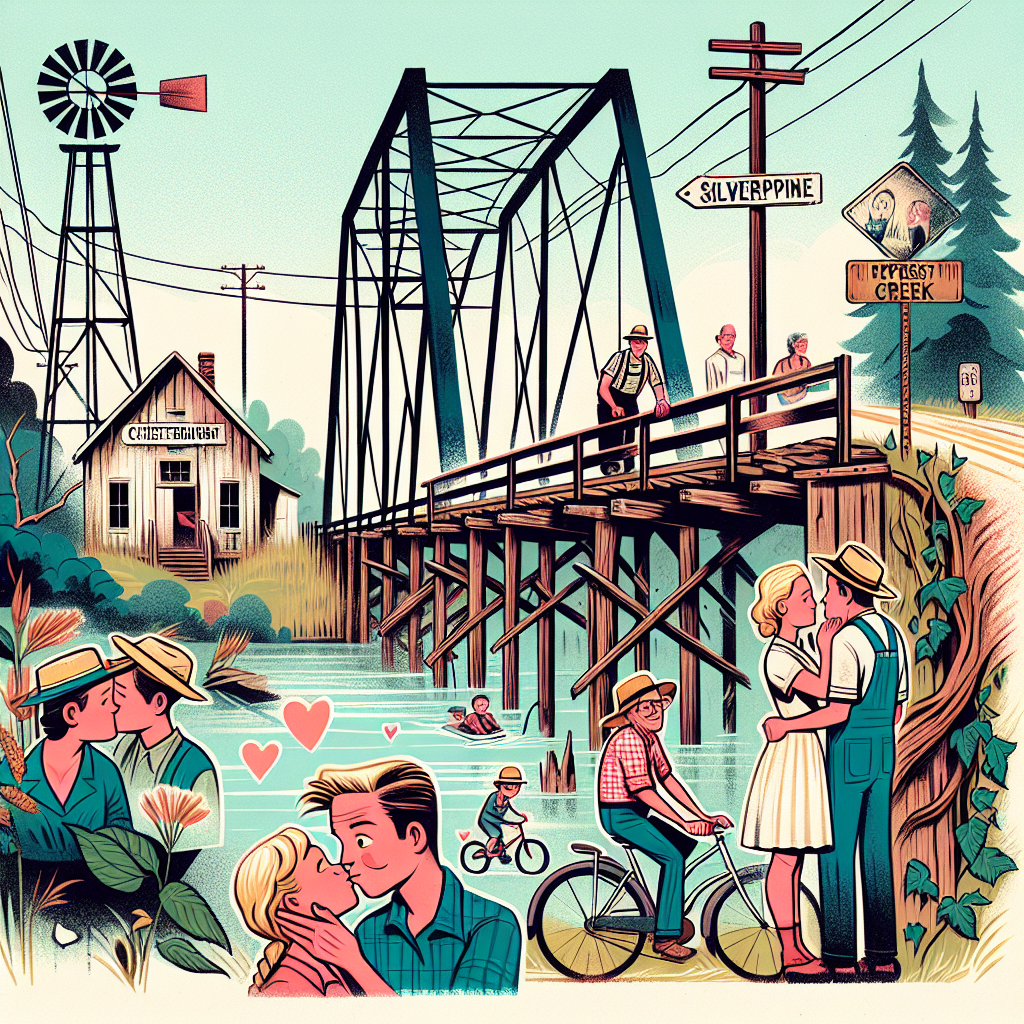Silverpine Bridge: The Heart of Chesterburgh on the Brink of Silence

They say the heart of Chesterburgh can still be found tucked into the folds of its long shadows and early morning mists. But this week, that heart skipped a beat—or maybe two—when news spread quickly that the old Silverpine Bridge, a crooked wooden bridge spanning Cypress Creek just beyond the northern edge of town, had been declared unsafe and closed indefinitely by the county.
For as long as anyone can remember, the Silverpine has been more than just a crossing. It’s the quiet passage many of us took as kids biking home from school, the whispered rendezvous spot for teenagers shyly sharing first kisses, and the shortcut farmers use to reach their fields. Closing it feels like a sudden loss, one the town isn’t sure it’s ready to bear.
I first heard about the closure standing on my own front porch, the dawn breeze carrying the faint scent of damp leaves and pine sap. Old Mr. Carrow, who’s lived in Chesterburgh since before the war, shuffled past and muttered about how the bridge was “on its last legs.” His voice was low but edged with something like worry. For him and many others, the bridge is a thread connecting past and present, and now that thread is fraying.
The county's announcement came abruptly on Monday afternoon, posted on the official website and shared by the town’s limited social media pages. Inspectors found deep rot in the bridge’s main support beams and several planks cracked beyond repair. They warned of a “potentially dangerous collapse” if left unattended. The closure was immediate; there was no grace period.
I spoke with Sarah Greer, who runs the Green Store by Main and Maple, a small grocer known for local produce and homemade preserves. Sarah stopped by my porch later that day, her apron dusted with flour and the scent of cinnamon rolls clinging to her.
“It’s more than just convenience for most folks,” she said softly, eyes downcast. “I see Mrs. Donnelly twice a week. She relies on me to bring her groceries, but without the bridge, the trip is twice as long. And it’s not just distance—it’s the hillier roads, the narrow shoulders, cars speeding by. It’s dangerous, especially in bad weather.”
Local schools had to announce alternative bus routes, and for kids living east of the creek, the closure adds twenty minutes every morning. Mary Lou Patterson, a single mother of three, told me over the phone how she’s juggling family schedules like a seasoned circus performer.
“We’re driving my kids all over now,” she said, voice strained. “That adds gas money we don’t have, and more time away from work and school. It’s like watching our days shrink. I didn’t think a bridge could do this much.”
The story deepened when I met Engineer Tomas Vega, who led the inspection team. Out by the creekside office, overlooking the bridge but kept well behind safety barricades, his usually steady manner cracked.
“The damage isn’t sudden," Tomas explained, tracing a finger along a photo of the bridge’s undersides filled with fungus and water stains. “This bridge was built in the 1920s, using local timber, robust for its time, but nearly a century of weather, floods, and heavy use have taken a toll. It hasn’t had a proper restoration in decades.”
Tomas’s words felt like a delicate balance between alarm and regret. “Ignoring it wasn’t an option. We had to act before tragedy.” Yet no final plan for repairs or replacement has been announced. Funding is uncertain, and the county’s budget meetings won’t happen until next month. Meanwhile, residents are left navigating inconvenience alongside the steady pulse of worry.
Walker’s Feed and Tack, a general store popular with farmers and horse enthusiasts, has seen a rise in foot traffic from people avoiding the detours. April Jensen, the store’s owner, filled me in on the quiet ripple
